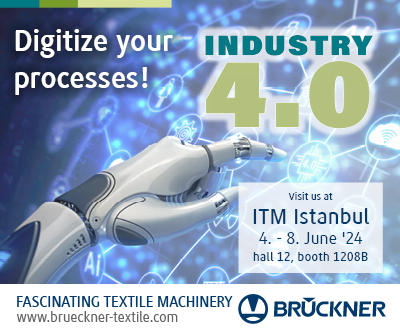Digital Textile Printing the new era in Textile Industry
Md. Saidul Islam, Managing Director, Duster Limited– Exclusive distribution partner of aeoon Technologies, Austria.

Digital textile printing is often referred to as direct-to-garment printing (DTG). It is the method of adding colourful designs to numerous sorts of textures or fabrics by utilizing digital inkjet printing equipment. It is considered to be more costly than conventional or traditional textile dyeing. Digital textile printing gives the capacity to print detailed outlines in splendid colours. One of the main reasons driving the market is the continuous advancement or innovation of new technologies.
Nowadays, consumers want to change frequently and give themselves a much greater individual touch. There is scarcely any other technology that combines brilliant colours, wonderful designs, and production on demand with low resource utilization. Currently, more than 60 per cent of digitally printed textiles are produced in Bangladesh, India, Indonesia, Pakistan, and Vietnam. Due to the increase in demand, many of the factories in Bangladesh are opening the digital printing section. There are many types of DTG printers that range in price and quality, so it’s important you find the best one for the way you work. Here are six key areas to consider to make sure you get the most out of your investment.

- What is your daily production?
DTG printing is a substantial investment, so depending on your print volume, it may or may not make sense for your operations. For example, with the aeoon Maikuro DTG printer, you’d want to be reaching a minimum volume of 150 shirts/per day. The aeoon Compact model is best for 300 shirts/day and the KYO 12/3 is ideal for 800 shirts/day or more. Evaluate what throughput is needed to see an ROI.
- Is the pretreatment process kept offline?
Separating critical processes is crucial to minimize failure points and downtime, and maximize efficiencies. Machines that integrate printing with other processes – such as pretreating and drying – have far too many failure points that put your entire operation at risk.
- Are quality and ink usage optimized?
The higher the print quality, the more your customers will be coming back. Print head performance is crucial in order to achieve the best possible results. When you consider buying a DTG printer, ask about the smallest picolitre droplet size, that the printheads are able to produce, and the maximum DPI (dots-per-inch). Colour accuracy is another important aspect to consider. Ideally, the printer’s RIP (raster image processor) provides colour profiling, which covers a large amount of PMS colours, without requiring additional spot colours.
- Are continuous training and responsive support provided?
You’re not just choosing a printer, you’re choosing a partner. DTG is an evolving market and the learning curve can seem overwhelming at times. Your partner should be consultative and collaborative, helping determine and develop the best solution for the way you work. Continuous training should be provided to ensure you’re always maximizing your investment. Having a dedicated support team is just as important.
- What is the useful life and cost per print?
The total cost of ownership includes the initial price, weekly output, ink costs, operator costs and more. Ideally, you want a printer that’s capable of the highest output with one operator to achieve the lowest cost per print. Reliability and useful life are other big considerations. True industrial-grade printers, such as the aeoon KYO 12/3 have a useful life of more than 17 years.
- Will the printer integrate and be scalable long-term?
Avoid printers that come with proprietary software. Proprietary software limits your ability to choose the software that best matches your business model, and restricts your ability to change or add software solutions. Choose a printer that will integrate with a software solution of your choice to ensure the solution is scalable as your business grows.
aeoon end-to-end DTG solutions
Outstanding print quality
- Print photorealistic pictures, gradients, thin lines
- The excellent hand feels of the print
- GOTS-approved and OEKO-Tex®-certified inks and fluids
Ready to automate
- Integrated OPC-UA and REST interface
- POD-Fulfilment – using any online marketplace platform including Shopify®, WooCommerce, Etsy, Amazon, and more
Technical & Support
- On-site, remote and digital support
- Minimize operating and maintenance costs
- Prevent faults and system failures
Offline Pretreatment
- Creating an efficient workflow
- No corrosion or rust inside the printer
- Automatic fluid change
All-in-one solutions for DTG
- Many years of experience in the DTG industry
- Reliable partner and dealer network
- Smart end-to-end solutions for digital textile printing
Made in Austria
- High-quality industrial DTG equipment
- Customized solutions
- Local and regional supplier network.
aeoon’s exclusive distribution partner in Bangladesh – Duster Limited
With great pleasure, we are now able to announce that the aeoon Family has grown by a new member: Duster Limited will from now on be responsible for supplying Bangladeshi customers with our high-quality DTG equipment. We are very happy to have found a distributor that has great insight into the local market and has been a reliable source for technical equipment in Bangladesh for many years.
Plz visit us at DTG Expo Hall 1 Booth no-102, Date- 15-18 February at ICCB in Dhaka, Bangladesh









